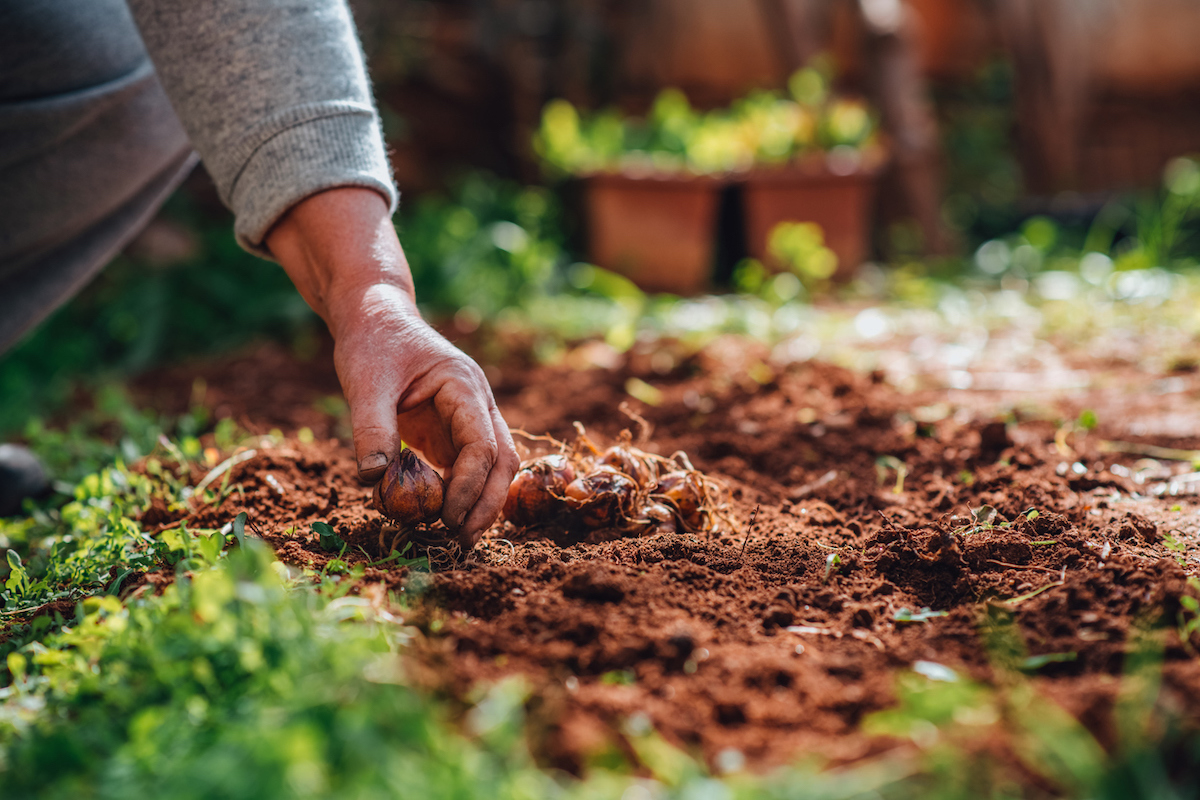

We may earn revenue from the products available on this page and participate in affiliate programs. Learn More ›
Just when you think gardening season is winding down, fear not. A favorite fall task might be to plant bulbs in fall so they can thrive from winter chilling and get their roots started before spring warmth helps them emerge. Easy-growing bulbs to plant in fall prefer well-draining fertile soil and full sun during their bloom time, though alliums and anemones can get by with partial shade, and short species of fritillaria prefer it. Most of these spring bloomers don’t require fertilizer, but you must allow their foliage to die back naturally after blooms fade.
American Meadows recommends that gardeners in USDA Zones 1 through 7 plant spring-blooming bulbs before their first frost in autumn, or when ground temperatures reach 40 degrees to 50 degrees Fahrenheit. Those in Zones 8 through 11 should refrigerate their bulbs for 3 to 4 months before planting them during the coolest time of the year.
1. Ornamental Allium (Allium spp.)
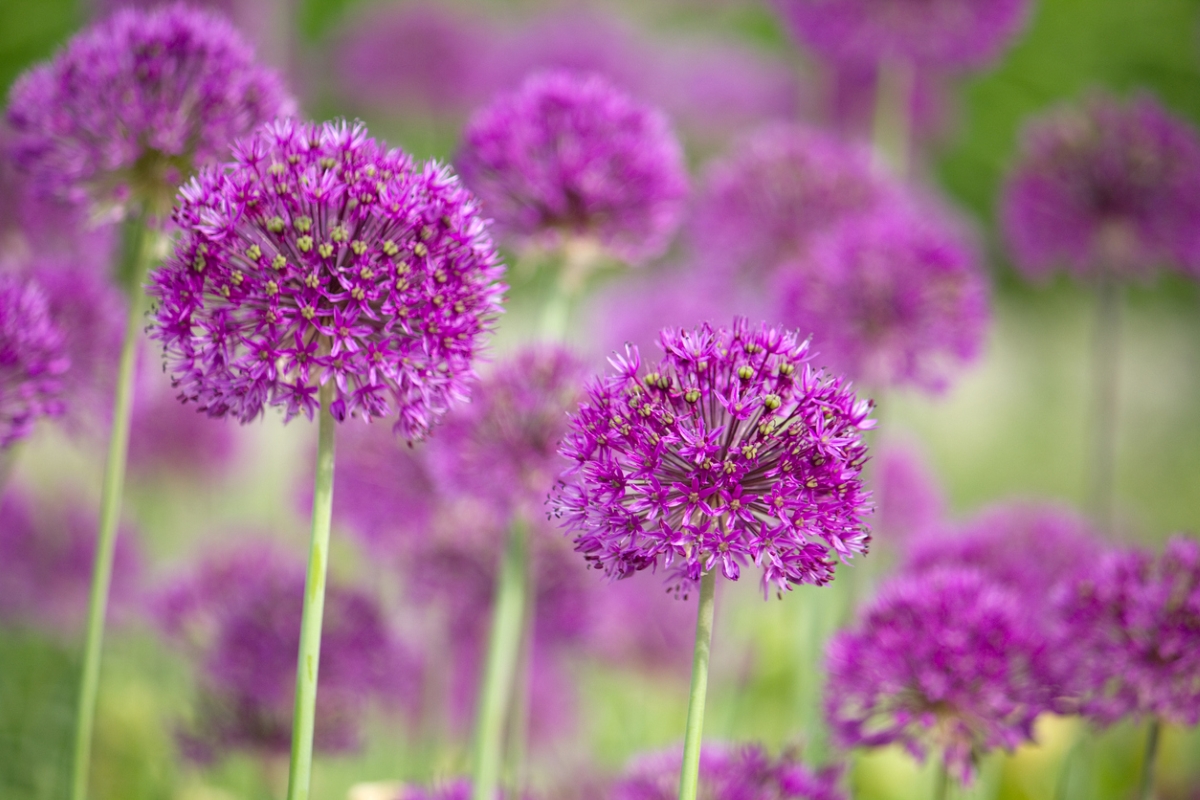
Related to edible onions, alliums are grown for umbels of small blooms rather than for flavorful bulbs. Varying in height from 6 inches to 5 feet, they produce their spring or summer 1- to 12-inch puffs of posies atop leafless stems. Alliums’ “bee-guiling” flowers are attractive to pollinators, often smelling honey sweet rather than onion-scented like their spiky foliage.
USDA Plant Hardiness Zones: 4 to 10
Best For: Borders, bouquets, rock gardens
RELATED: These 10 Flowering Plants Boast the Biggest Blooms
2. Anemone (Anemone spp.)
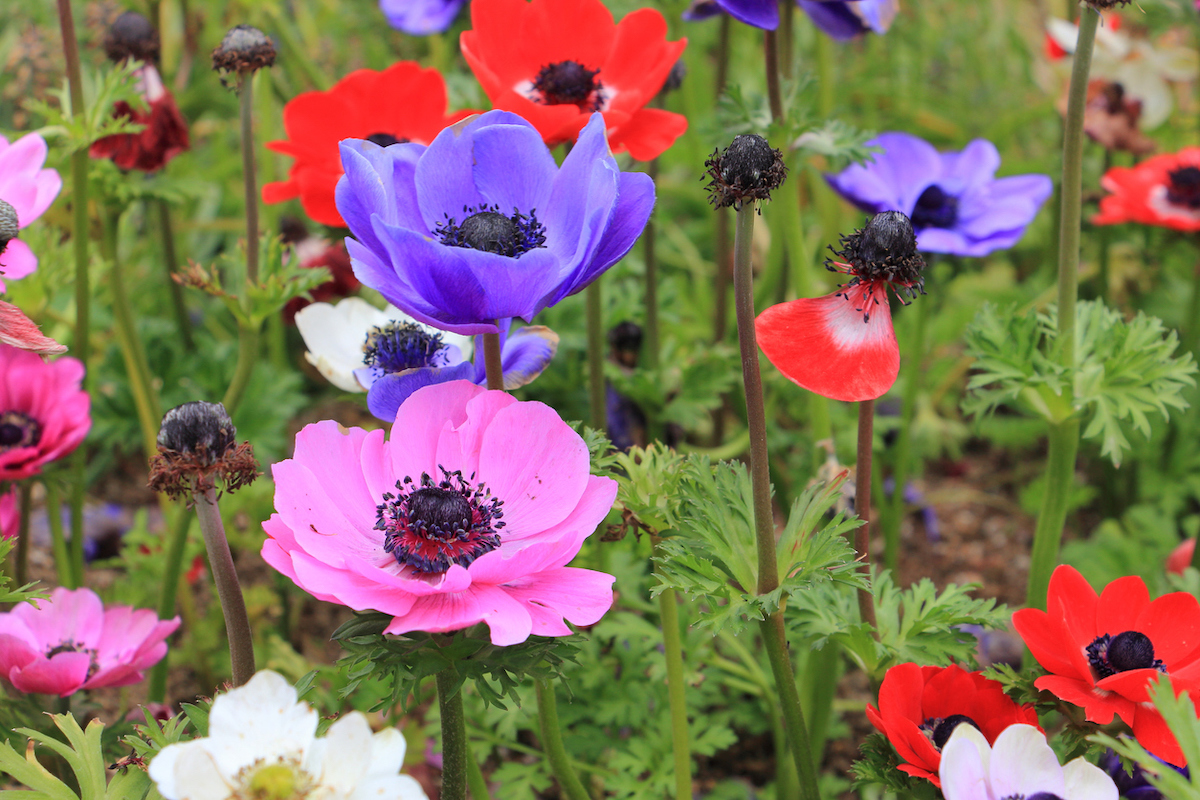
With blooms that resemble summer flowers, plus fern-like foliage, the most popular bulb-grown anemones include A. coronaria—hardy only in Zones 7 through 10—and the ground cover A. blanda, which will thrive as far north as Zone 5. The former bears blooms which might pass for poppies while the latter’s flowers duplicate daisies. Should you prefer “poppies,” you can grow A. coronaria as an annual north of Zone 7. Just include them among your bulbs to plant in spring for summer blooms.
USDA Plant Hardiness Zones: 5 to 9
Best For: Borders, containers, ground cover
3. Crocus (Crocus spp.)

Low-growing crocuses—with their grass-like foliage and cup-like blooms—seldom surpass 6 inches in height and come in both autumn-blooming and spring-blooming species. The flowers of the former tend to be larger than those of the latter and often pop up quite soon after you plant the corms. Grow the saffron type to spice up your meals, as well as your autumn garden. Spring-blooming crocuses often are the earliest flowers to emerge during that season, making them much “bee-loved.”
USDA Plant Hardiness Zones: 3 to 8
Best For: Containers, naturalizing, rock gardens
4. Daffodil (Narcissus spp.)
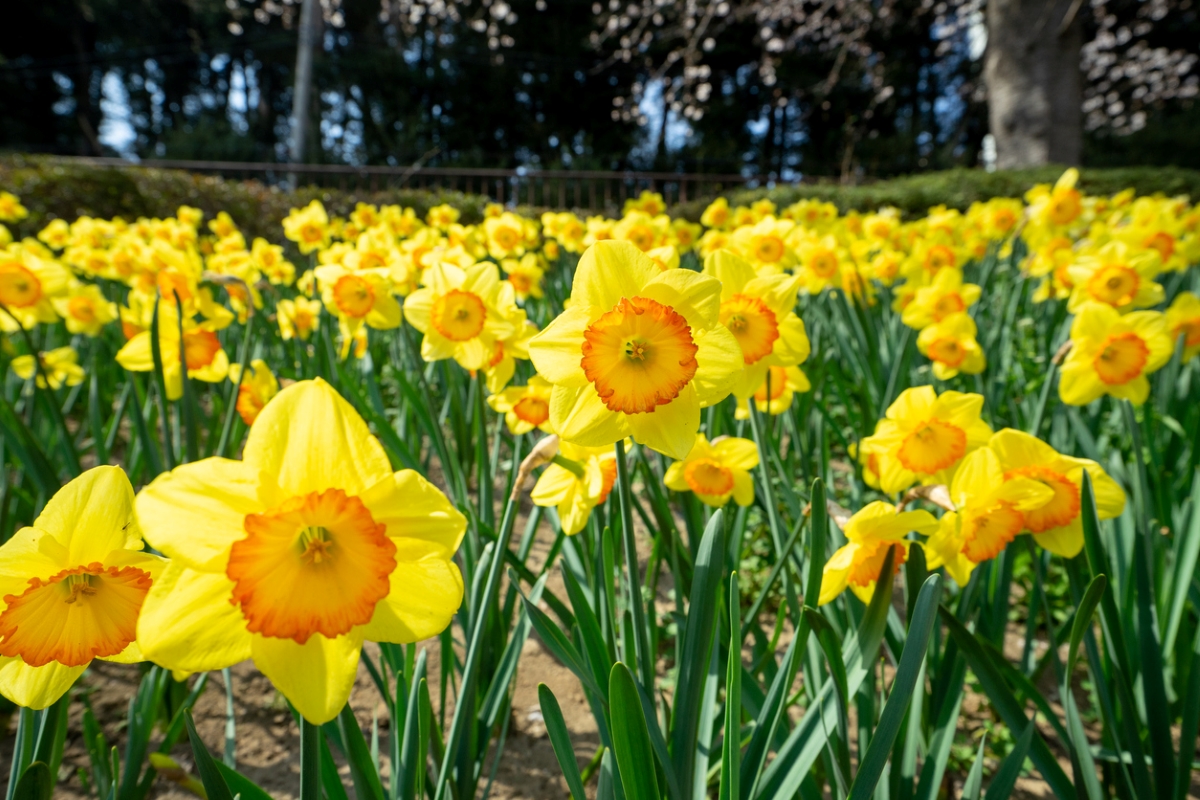
Among the most deer-resistant bulbs to plant in fall, Narcissus species contain bitter—and toxic—lycorine, which only desperate animals will eat. Standing between 4 inches and over 2 feet tall, daffodils now trumpet shades of red, orange, and pink as well as the original yellow and white. When planting daffodil bulbs, place them where later plants will conceal their yellowing leaves, since the foliage of these and other spring-flowering bulbs must be allowed to wither without being cut off to restore energy to the bulbs. Although some types only last 3 to 5 years, daffodils persist indefinitely if not overcrowded.
USDA Plant Hardiness Zones: 3 to 9
Best For: Borders, containers, naturalizing
5. Fritillaria (Fritillaria spp.)
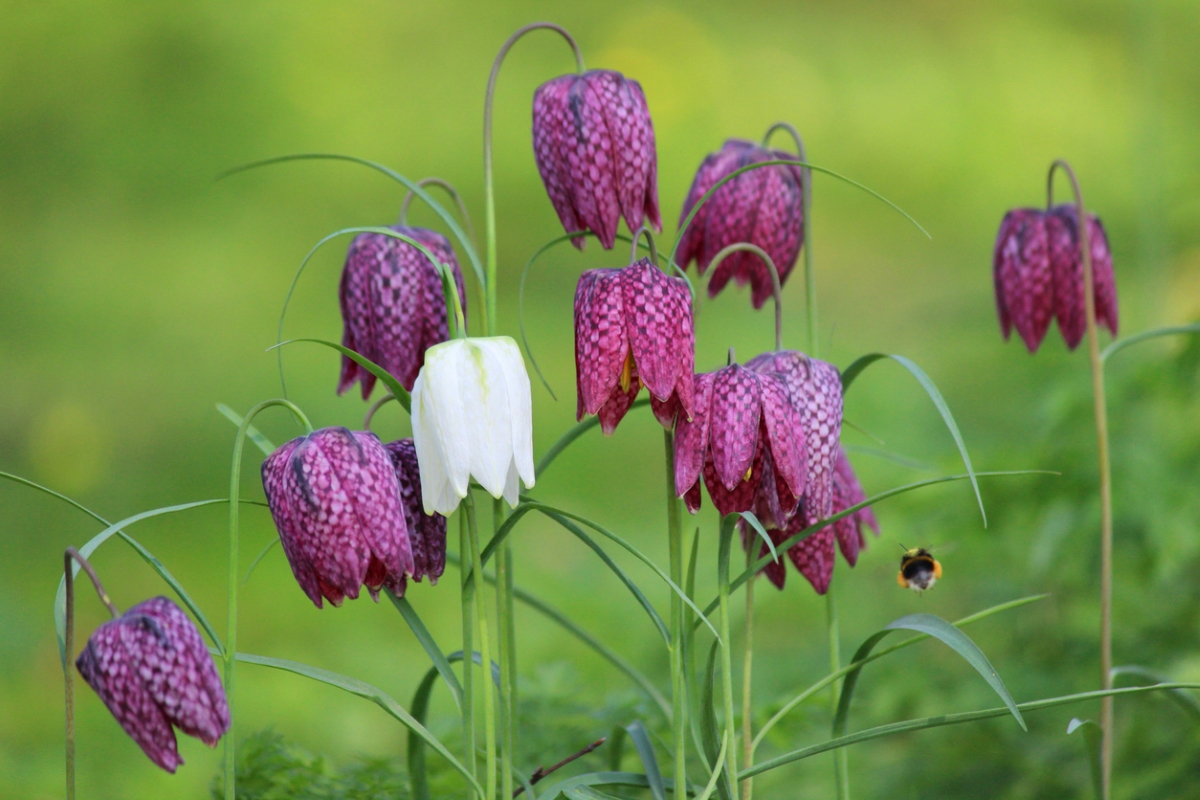
One of the more unusual perennial bulbs to plant in fall, fritillaria offers drooping bell-shaped flowers that open beneath a tuft or grassy leaves. One of its most popular species, F. meleagris, is known as the guinea hen flower for its intricately mottled coloring. However, the members of this genus can range from the nearly 8-inch high F. michailovskyi with its muted 1½-inch purplish-brown bells with yellow trim to the 3-foot crown imperial plant (F. imperialis) with its crown of “loud” 3½-inch bright orange bells. But all can ring in spring on a high note.
USDA Plant Hardiness Zones: 3 to 9
Best For: Borders, containers, rock gardens
6. Garlic (Allium sativum)
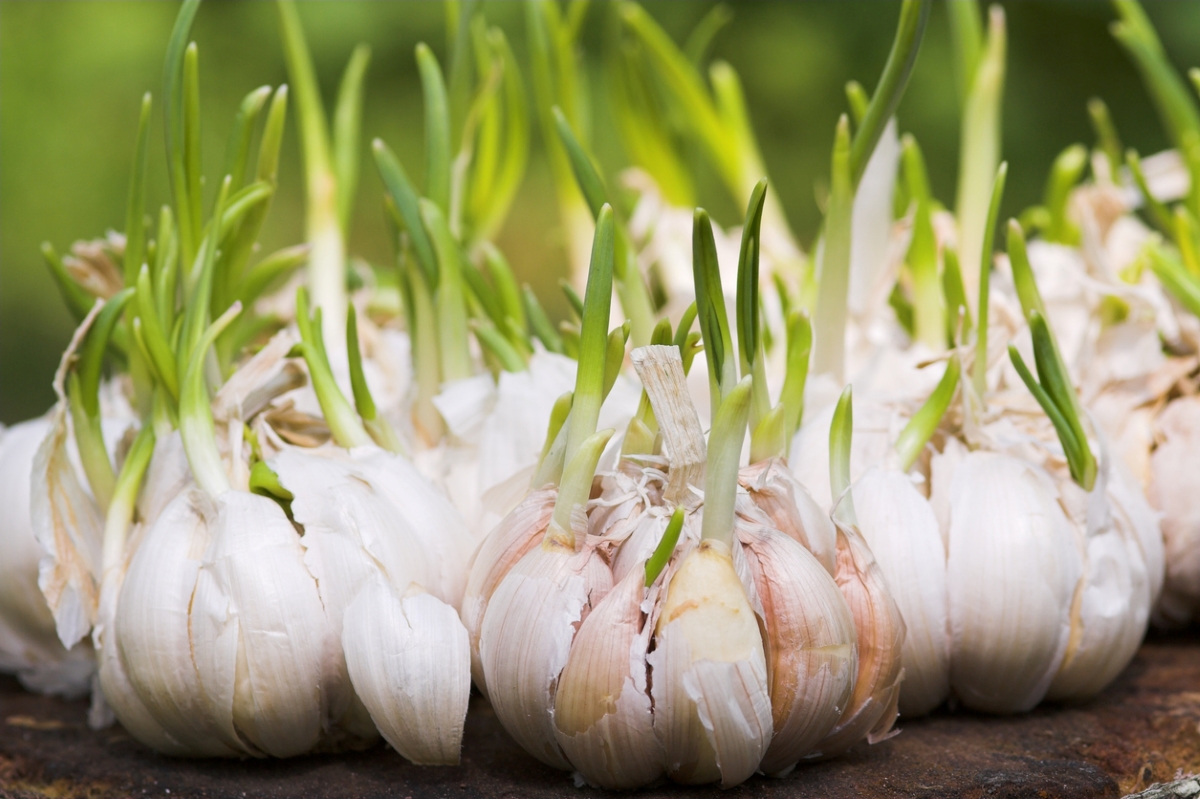
Yes, there are some bulbs you can grow because they produce edible bulbs rather than eye-candy flowers. Garlic bulbs are among those. For planting, divide the sourced garlic bulbs for planting (not from the produce aisle) into their individual cloves with their papery husks intact. For the best results, plant only the largest of those cloves. Your garlic should be ready for harvest in early summer of the following year once its tops begin flopping over.
USDA Plant Hardiness Zones: 3 to 9
Best For: Vegetable gardens
7. Hyacinth (Hyacinthus orientalis)
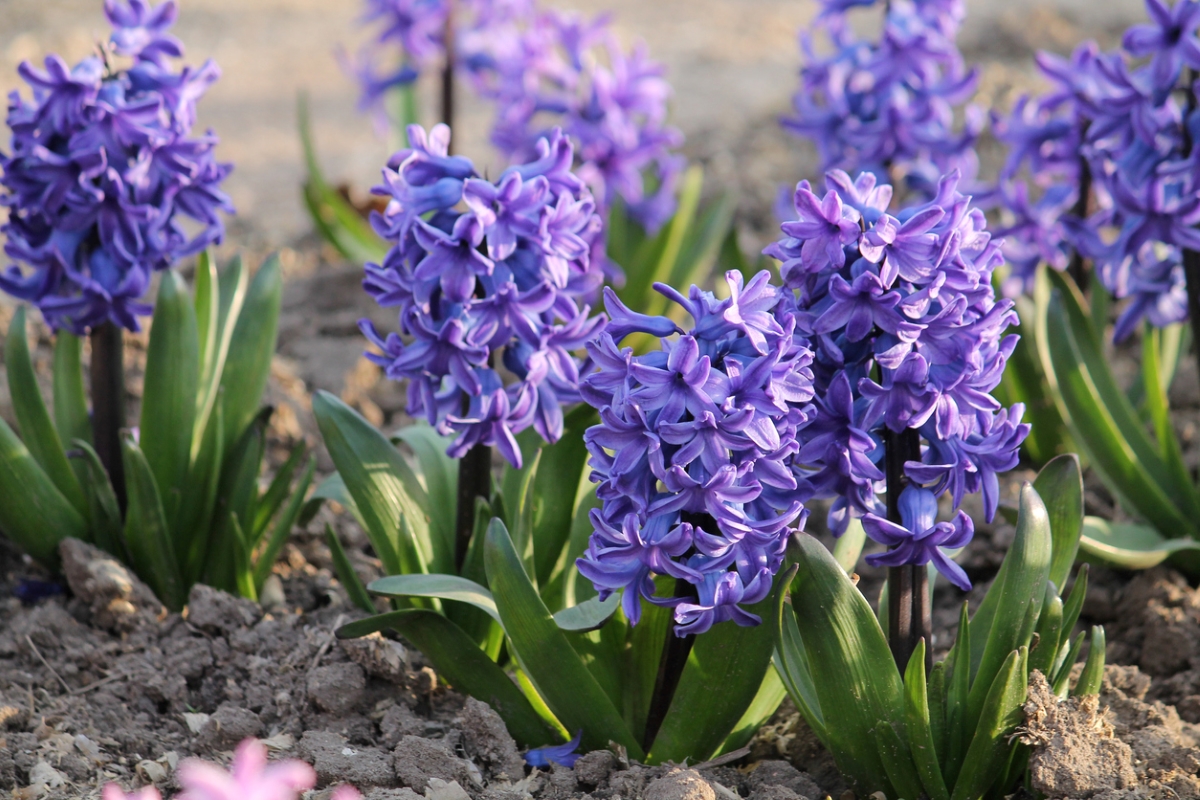
Its plump columns packed with waxy and highly fragrant small flowers, hyacinth seldom surpasses 1 foot in height with strappy foliage, but remains one of the most popular flower bulbs to plant in fall for forcing indoor blooms. However, you can grow it in flower beds as long as you are careful to plant bulbs early in autumn. Put on gloves before reaching for your bulb planter, though, since handling the bulbs can cause an allergic skin reaction.
USDA Plant Hardiness Zones: 4 to 8
Best For: Beds, borders, forcing indoors
8. Iris (Iris spp.)
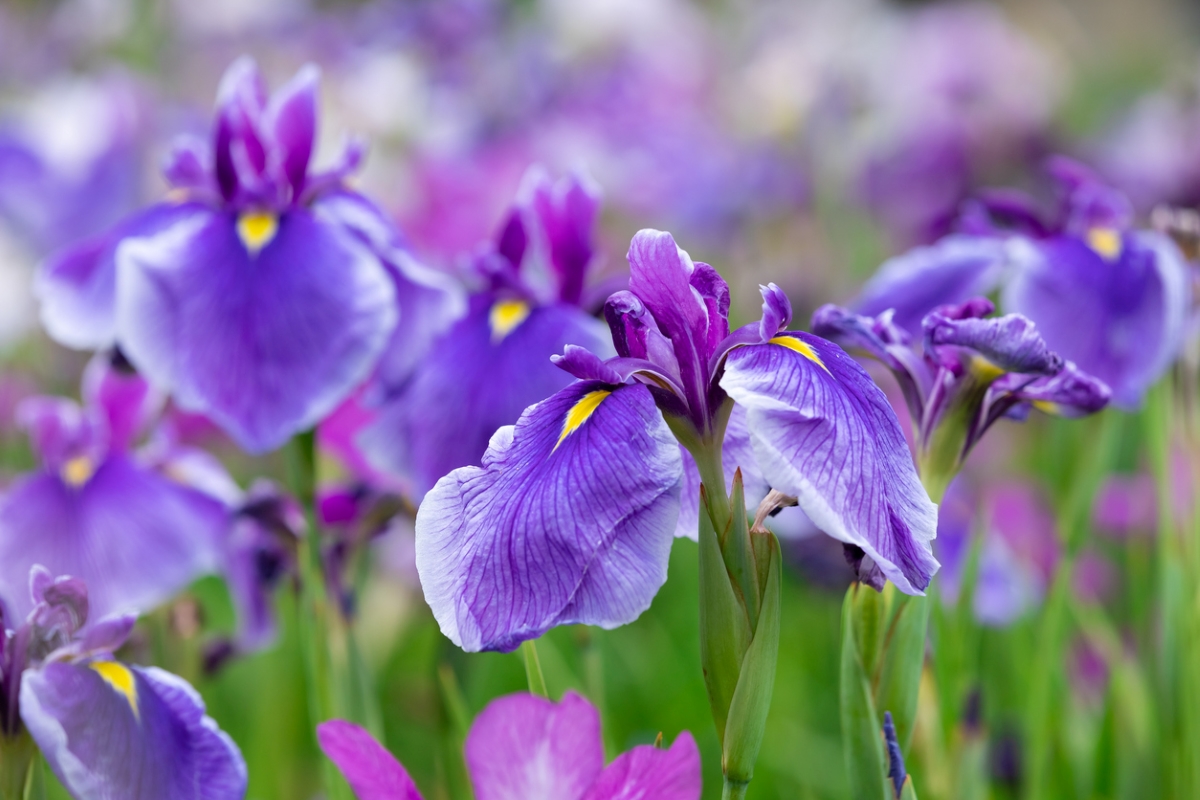
When planting irises in the fall, keep in mind that large, bearded I. germanica types—which grow from rhizomes up to 4-feet tall with sword-shaped leaves—may not bloom the following spring. It sometimes takes them a while to establish themselves. However, varieties that grow from bulbs with more grass-like foliage and seldom surpass 2 feet, such as I.danfordiae, I. histrioides, I. reticulata, and Iris x hollandica types should show up right on schedule, with the flower’s characteristic turned-up-collar-like standards and skirt-like falls. Dutch iris (I. hollandica), however, can take several years to mature.
USDA Plant Hardiness Zones: 3 to 9
Best For: Beds, borders, containers
9. Lily (Lilium spp.)
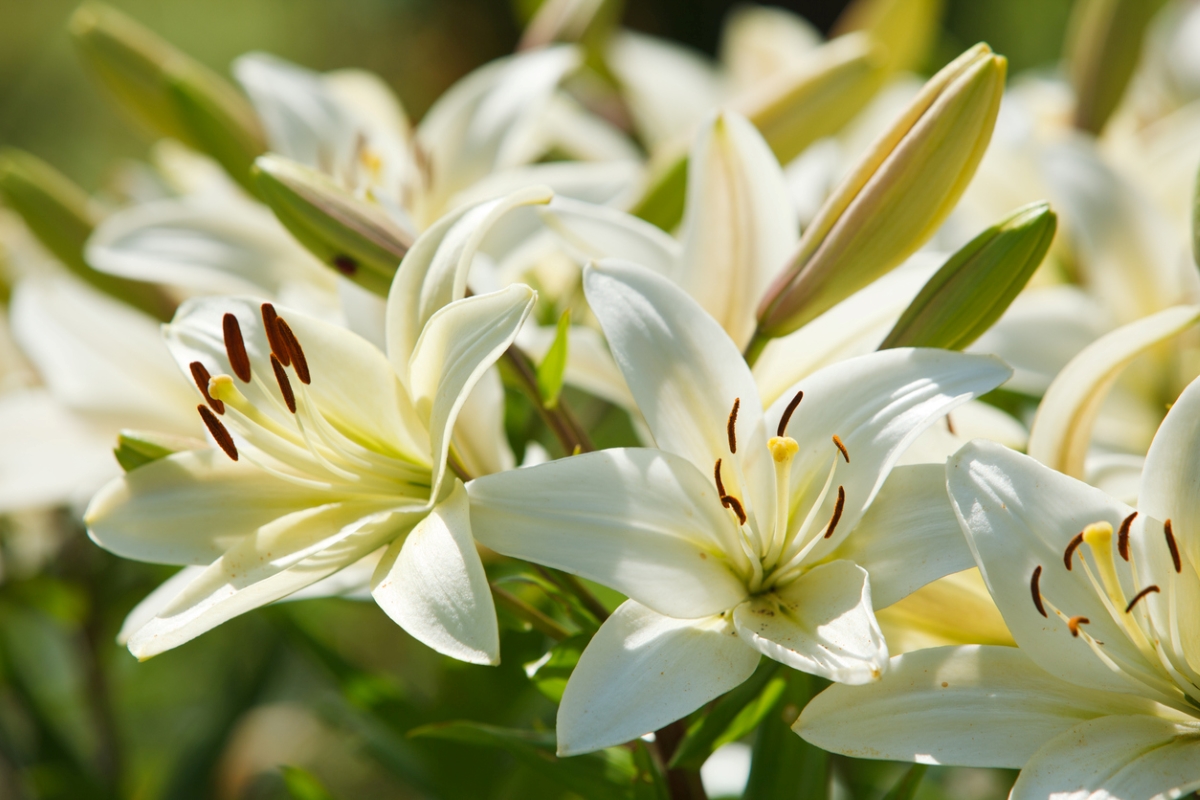
Lilies perform best when planted in fall rather than spring, since the longer period before flowering gives them time to “put down roots” before their summer bloom time. Varying from 1 foot to 8 feet high with trumpet-shaped flowers up to 9 inches across, they remain among the showiest of garden blooms, and some types also are highly fragrant. Although lily bulbs don’t require feeding, you may want to apply a granular organic fertilizer to their soil in the fall to improve it, mixing in the equivalent of 4 pounds for a 60-square-foot bed.
USDA Plant Hardiness Zones: 3 to 9
Best For: Beds, borders, bouquets
RELATED: How to Grow Canna Lilies
10. Shallot (Allium cepa)
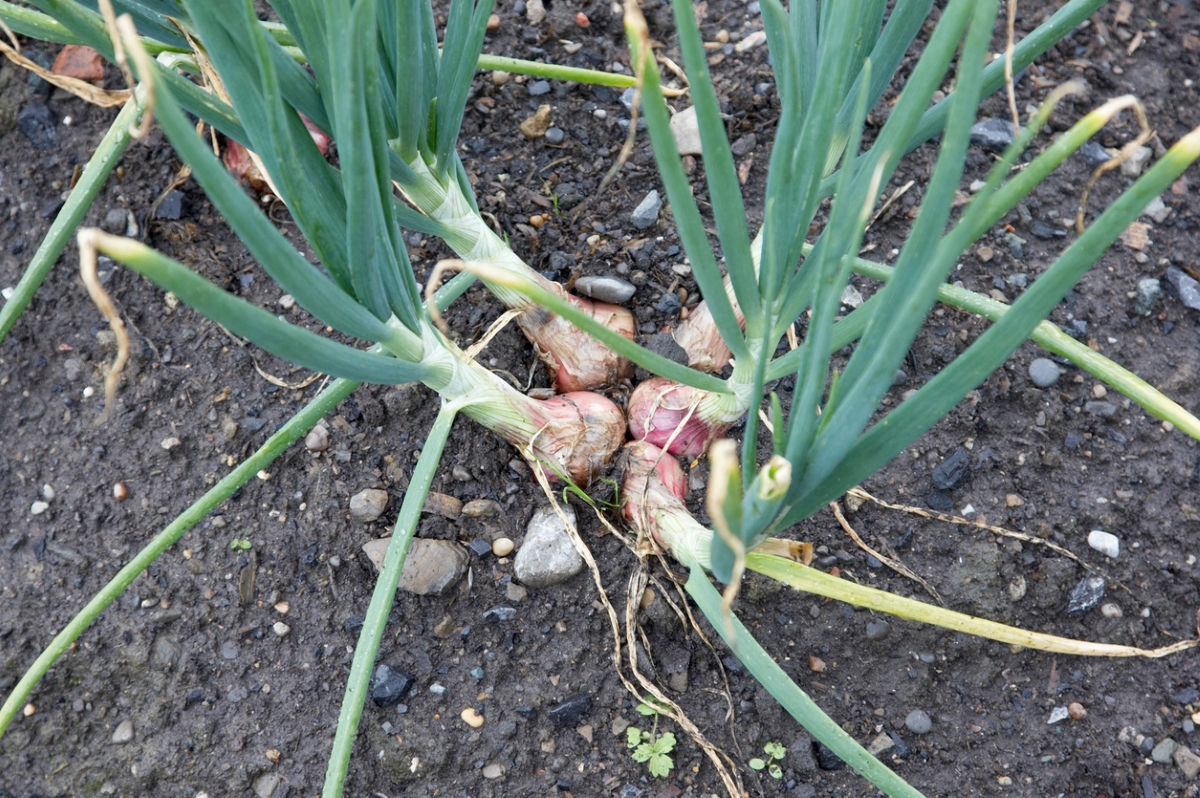
If you are looking for other vegetable bulbs to plant in fall, keep in mind that—as with garlic—shallot cloves can be set out in autumn for a late spring or summer harvest of bulbs the following year. Where temperatures don’t drop too drastically, you also can harvest their greens during winter and spring.
USDA Plant Hardiness Zones: 5 to 8
Best For: Vegetable gardens
11. Squill (Scilla spp.)
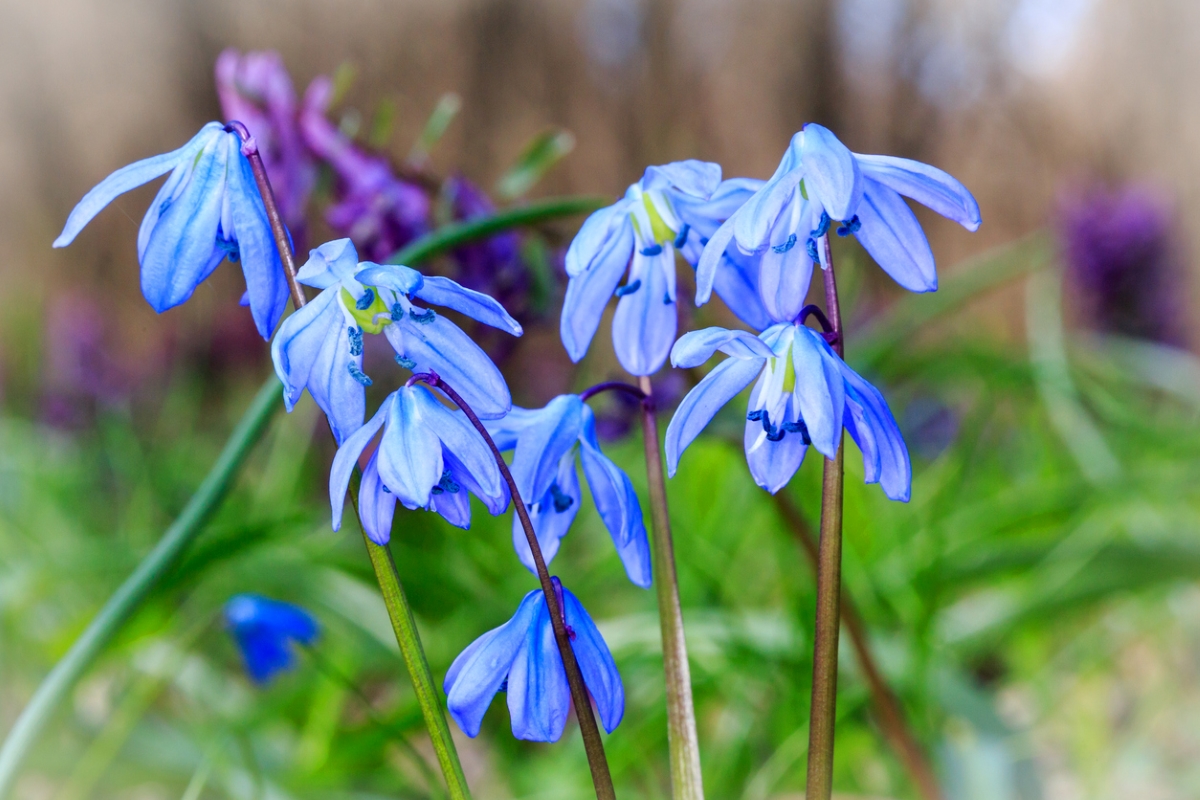
Squills provide brilliantly blue shades in the spring garden, with the hardiest (S. siberica) only growing to about 6 inches high with bell-shaped blooms in Zones 3 through 9. Just beware that S. siberica is considered invasive in areas of Minnesota. The showier S. peruviana, with its large cluster of star-shaped blooms, is only hardy in Zones 7 to 10. “The New Sunset Western Garden Book” recommends that you grow S. siberica in naturalized drifts, and S. peruviana in clumps or containers.
USDA Plant Hardiness Zones: 2 to 10
Best For: Containers, edging, naturalizing
12. Tulip (Tulipa spp.)
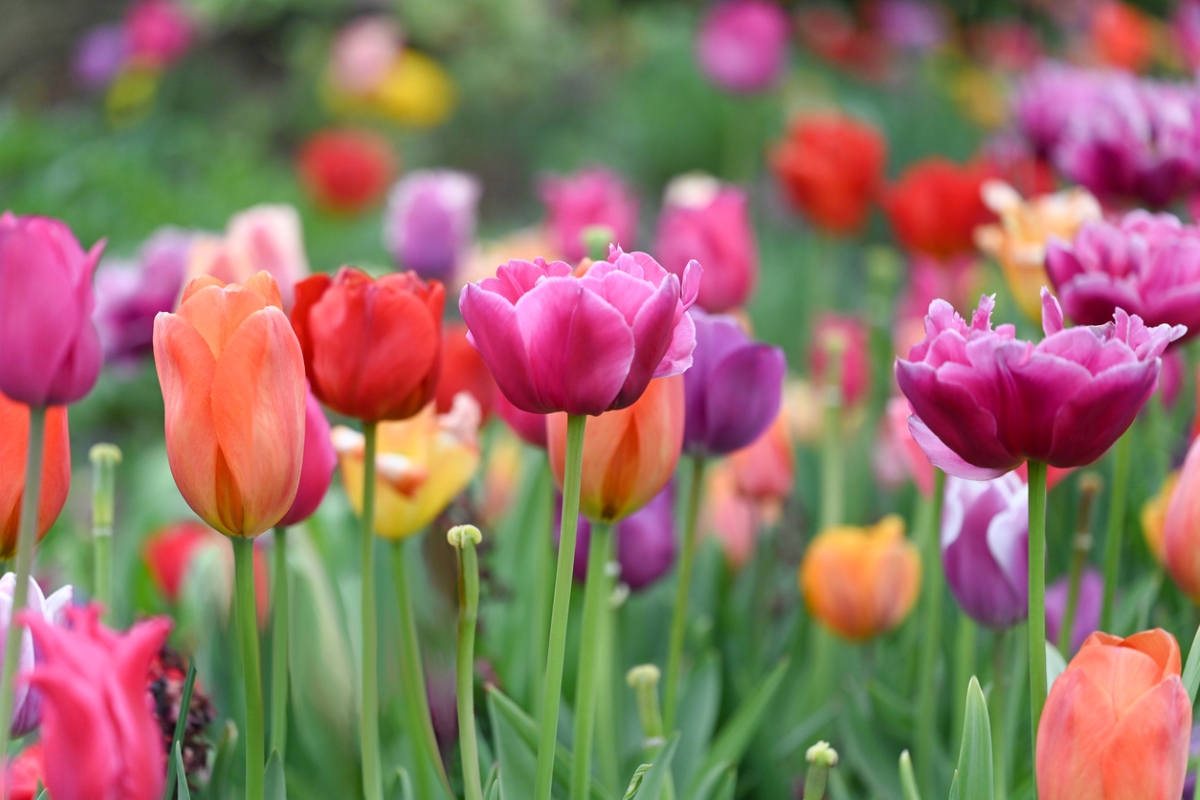
Varying in height from 5 inches for species types to 3 feet for a few large, late varieties, tulips are one of the best bulbs to plant in fall—certainly one of the most popular. Keep in mind, however, that there are thousands of tulip cultivars, and some are not reliably perennial or likely to produce blooms beyond their first spring. The most reliable as perennials are Darwin hybrids, followed by wildflower types such as T. Greigii, or water lily tulips (T. kaufmanniana). If you treat the others as fall-planted annuals, however, you should be thrilled by their decorative goblets, which come in double and fringed versions as well as plainer cups.
USDA Plant Hardiness Zones: 3 to 8
Best For: Beds, borders, bouquets
RELATED: When to Plant Tulip Bulbs for Successful Spring Blooms
13. Winter Aconite (Eranthis hyemalis)
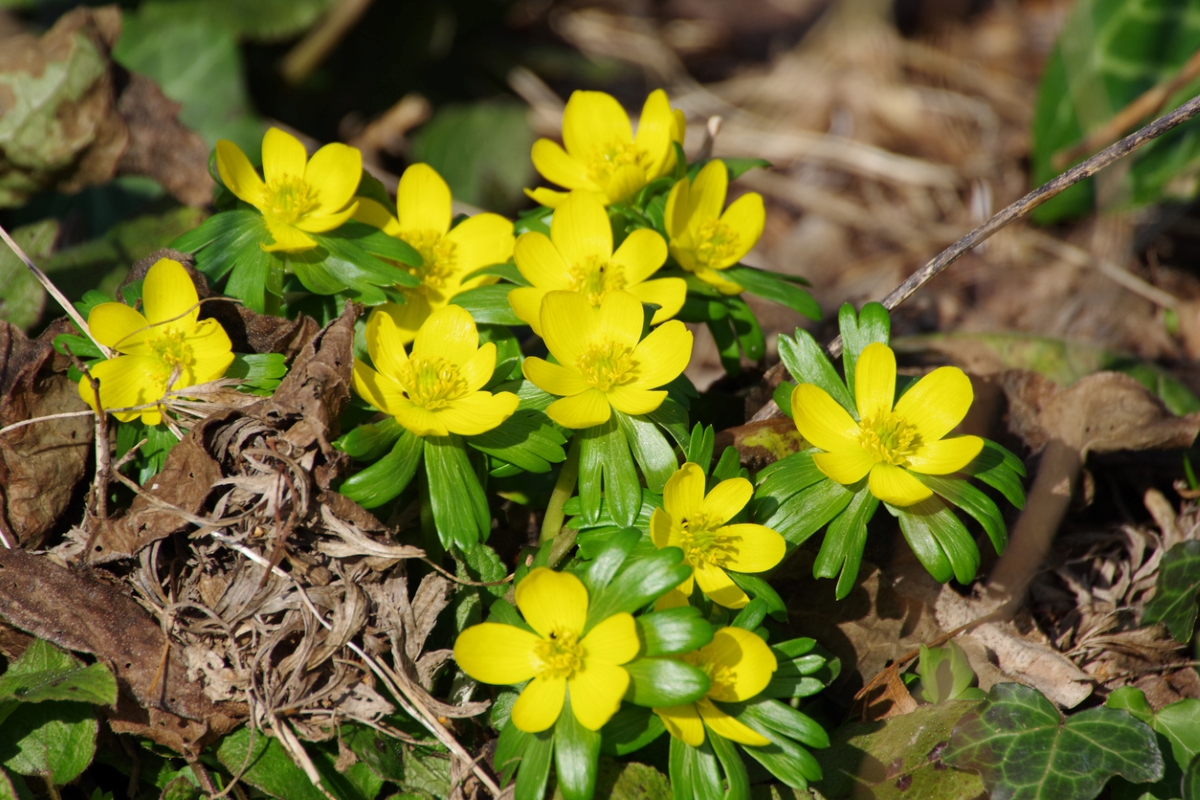
Topping out at 6 or 8 inches, winter aconite is among the smallest of plants produced by spring bulbs to plant in fall. However, it also is among the earliest to bloom, often producing its 1½-inch buttercup-like yellow flowers in late winter while crocuses are still abed. If you prefer an aconite with a bit larger blooms, try E. hyemalis (Cilicica Group) instead; it flowers about a month later than most winter aconites and has more bronzy foliage.
USDA Plant Hardiness Zones: 4 to 7
Best For: Ground cover, naturalizing, rock gardens.
